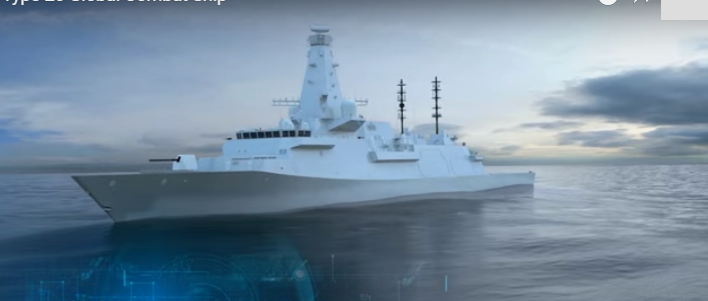
Britain’s Royal Navy is to use artificial intelligence situational awareness software to help humans assess threats in a maritime combat system demonstrator.
The system named STARTLE continuously monitors and evaluates potential threats using a combination of artificial intelligence techniques.
It is inspired by the way the human brain works, emulating the mammalian conditioned-fear response mechanism. Rapidly detecting and assessing potential threats, the software significantly augments human operator situational awareness in complex environments, the company behind the system said.
Roke Manor Research (Roke) is best known for its cricket ball tracking system Hawk Eye which is used to track the trajectory of the ball and helps ensure correct Leg Before Wicket decisions.
It is due to be the first supplier to integrate artificial intelligence (AI) software into a Defence Science and Technology Laboratory (Dstl) sponsored maritime combat system demonstrator.
The news comes as Dstl awards the contract for a third phase of a £1m investment in threat detection software that is designed to help the Royal Navy handle the growing complexity of threats.
To date STARTLE has been targeted as autonomous vehicle security and IT network defence as a neural network system in detecting penetration test activity in real-world computer networks, and can use intercept-derived data from local and cloud-based storage.
If integrated into existing warship sensor suites, it would support the Principal Warfare Officer by intelligently processing multiple sources of information, whilst cueing systems to assess and confirm potential threats. In increasingly complex and dynamic mission environments, it could allow the command team to make better informed decisions faster. The vital seconds it contributes to decision making could be the difference between success and failure.
Mike Hook, lead software architect on STARTLE at Roke, said: “This is an exciting project for us. Traditional methods of processing data can be inefficient so we have looked at the human brain’s tried and tested means of detecting and assessing threats to help us design a better way to do it. The techniques have the potential to benefit the Royal Navy.
“The first two phases of the project have proven that we’ve been able to successfully apply these techniques to real data from complex scenarios. The clever part comes in the way these potential threats are detected and the way our software redistributes resources to decide if they are real – all in the blink of an eye.”
David Cole, Managing Director for Roke said: “The project draws upon every element of Roke’s 60 years of experience in sensors, data science, communications and cyber security. Innovations such as these build real momentum for our clients, enabling the pull through of research into operational capability.”
In this phase, Roke will demonstrate the STARTLE techniques by integrating them into the Open Architecture Combat System – OACS, a demonstrator designed to show the utility of research ideas in a representative combat system in a realistic environment.
The firm is based in Hampshire and this year opened a second office in Gloucester.
The company employs around 400 people and this year expanded its cybersecurity team with an additional 20 specialists.
Ground combat troops
Roke has been involved in military technology for decades. Last month the company demonstrated wearable sensor technology to the Defence Science and Technology Laboratory (Dstl) which could help ground troops know their location, help avoid friendly fire incidents and identify where enemy fire is coming from.
These Dismounted Close Combat Sensors (DCCS) are the result of collaboration between Dstl and industry partners Roke, QinetiQ and Systems Engineering and Assessment (SEA).
DCCS could also help to prevent so-called ‘blue on blue’ incidents where friendly forces are mistaken for the enemy. The system allows commanders to track not only the location of personnel, but GPS, inertial and magnetic sensors on the weapon also accurately track where it is pointing. Reliable knowledge of both soldier location and weapon direction instantly identifies if friendly troops are being targeted.
A combination of camera, laser and orientation sensors mounted on a soldier’s personal weapon will allow them to highlight targets to other soldiers, Unmanned Arial Vehicles and aircraft at the press of a button. This will be quicker, easier and less confusing than giving verbal instructions; it is also extremely accurate. But it has many other potential uses too, such as identifying wounded colleagues, the location of civilians and potential helicopter landing sites.
Acoustic and camera technology automatically identifies where enemy weapons are being fired from, even if the soldier hasn’t seen or heard it being discharged. This information is provided to the wearer and to commanders, allowing them to take appropriate steps to deal with the threat.

Soldier of the future
Roke’s lead engineer on the project, Mark Coleman, commented: “We independently considered 252 fledgling technologies from across industry, academia and beyond, before developing, distilling and fusing them to create the concept of an integrated wearable sensor system which we then built and trialled. In addition to providing military advantage, we’ve also seen how DCCS lends itself as a testing platform to bring technology to the frontline faster.”
Dstl’s principal project engineer, Ken McEwan, also said: “This has been a very complex and technically challenging project. Despite these challenges there is no doubt that the demonstration programme has been very successful. It has shown that the concept works and that it has civilian and military applications.”






